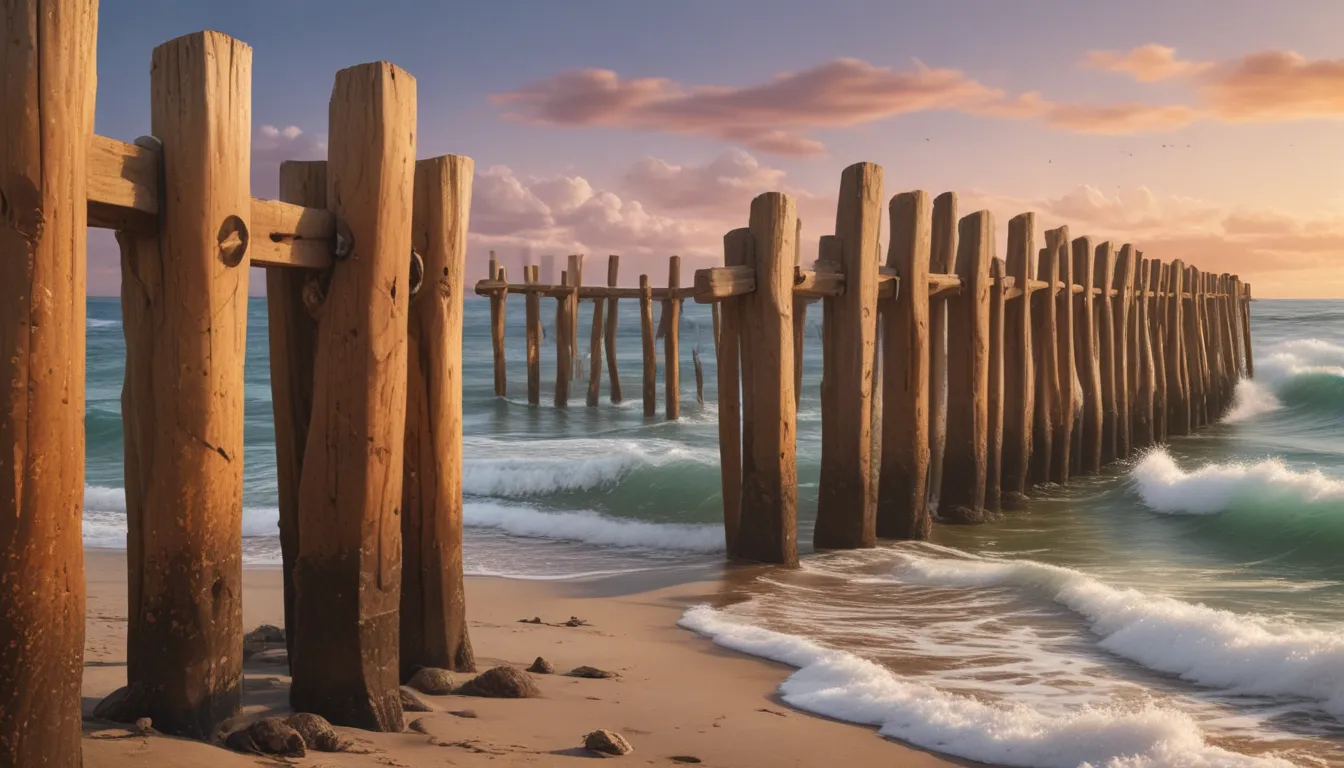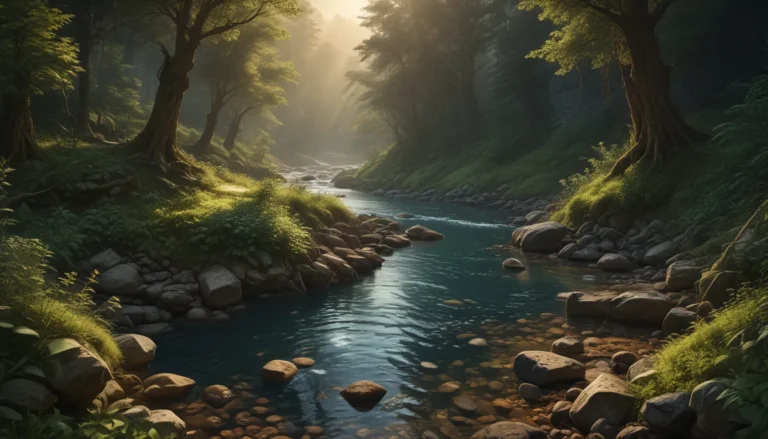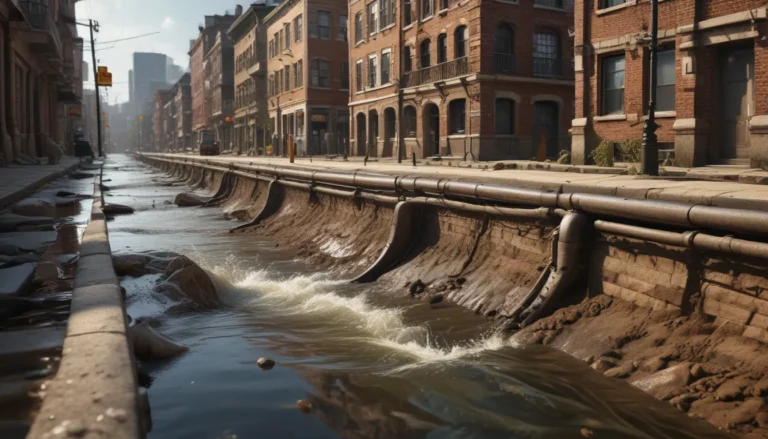A Note About Images: The images used in our articles are for illustration purposes only and may not exactly match the content. They are meant to engage readers, but the text should be relied upon for accurate information.
Welcome to the world of groynes, where coastal engineering meets environmental stewardship. Groynes are a hidden gem along coastlines, quietly protecting beaches and supporting ecosystems. In this article, we will unveil 13 astonishing facts about groynes, shedding light on their historical significance, functional diversity, and global impact. Whether you’re a nature enthusiast, a coastal explorer, or simply curious about the marvels of the natural world, prepare to be captivated by the allure of groynes.
Unveiling the Mysteries of Groynes
Groynes, also known as groins or jetties, are more than just barriers along the coast – they are the unsung heroes of coastal protection. These structures play a vital role in preventing erosion, managing sedimentation, and creating habitats for coastal plants and animals. Here, we delve into the intriguing world of groynes, uncovering the essential facts that make them indispensable in the realm of coastal dynamics.
Exploring the Origins of the Groyne
The term “groyne” originates from the French word “groin,” meaning snout or muzzle. This name is fitting for a structure that acts as a protective barrier, extending perpendicular to the shoreline. Groynes are designed to mitigate beach erosion and maintain the natural shape of coastlines, safeguarding the delicate balance of coastal environments.
Diverse in Size, Unified in Purpose
Groynes come in a variety of sizes, ranging from a few meters to several hundred meters in length. The dimensions of these structures are influenced by factors such as sediment patterns, wave energy, and shoreline characteristics. Despite their diverse sizes, all groynes share a common goal: preserving coastal integrity and stability.
Materials Matter: Building Blocks of Groynes
Construction of groynes involves a choice of materials, including timber, rock, concrete, or steel. The selection of material is based on considerations such as cost, availability, and durability. Each material brings its unique attributes to the groyne, shaping its effectiveness in coastal protection and management.
Guardians of the Coast: The Function of Groynes
At the heart of groyne functionality lies the task of trapping sediment carried by longshore drift. This process serves to widen and stabilize beaches, shielding adjacent land from erosion. Groynes act as silent sentinels, orchestrating the delicate dance of coastal sedimentation to preserve the beauty and resilience of coastal landscapes.
Shaping Waves, Shifting Sands: The Impact of Groynes
By intercepting wave patterns, groynes alter the flow of energy along the coast. They create sheltered areas on the updrift side while intensifying wave action and erosion on the downdrift side. This interaction with waves is a strategic maneuver in the realm of coastal engineering, guiding the dynamics of coastal processes.
Nurturing Nature: Groynes and Coastal Ecosystems
Beyond their protective role, groynes foster biodiversity by providing habitats for coastal flora and fauna. These structures serve as sanctuaries for plant and animal species, enriching coastal ecosystems and promoting ecological balance. Groynes are not just defenders of the coast – they are champions of biodiversity.
A Playground of Possibilities: Recreational Benefits of Groynes
Many beaches adorned with groynes become havens for recreation enthusiasts. These structures create tranquil swimming spots and shield beachgoers from turbulent waves, offering safe and enjoyable experiences for families and visitors. Groynes transform coastlines into vibrant playgrounds for leisure and relaxation.
A Legacy of Resilience: The Historical Tapestry of Groynes
The legacy of groynes spans centuries, with evidence of their usage dating back to ancient civilizations. From protecting harbors to managing erosion, groynes have stood the test of time as symbols of coastal resilience and ingenuity. Their historical significance underscores the enduring wisdom of coastal engineering practices.
Innovating the Future: Research and Development in Groyne Design
Driven by a quest for sustainability, scientists and engineers continuously explore new designs and materials for groynes. Innovation plays a pivotal role in enhancing the effectiveness of these structures while minimizing their environmental footprint. The pursuit of cutting-edge solutions ensures that groynes remain at the forefront of sustainable coastal management.
Safeguarding Shores: Groynes in Shoreline Management
As key players in coastal defense strategies, groynes are integral components of shoreline management plans. These plans are crafted to safeguard vulnerable coastlines, mitigate erosion, and uphold the natural equilibrium of coastal ecosystems. Groynes stand as steadfast guardians of coastal resilience, securing the future of our shores.
Balancing the Ledger: Costs and Maintenance of Groynes
The construction and upkeep of groynes entail significant investments. From initial construction to ongoing monitoring and maintenance, the costs associated with groynes are a crucial consideration in coastal management. Regular upkeep and potential rehabilitation ensure the longevity and effectiveness of these coastal defenders.
A Global Phenomenon: Groynes Across Continents
Groynes find their place in coastal landscapes worldwide, from Europe to Asia, North America to Africa. Each region tailors the design and deployment of groynes to suit its unique coastal conditions and management objectives. The global presence of groynes underscores their universal relevance in coastal protection and preservation.
Embracing the Challenges: The Future of Groynes
In a world grappling with climate change and rising sea levels, the role of groynes in coastal resilience is set to become even more vital. As frontline defenders of coastal integrity, groynes will continue to play a pivotal role in managing and safeguarding shorelines against the threats of the changing climate. The future of groynes is intertwined with the future of coastal sustainability.
In Conclusion: Celebrating the Marvels of Groynes
Groynes, with their intricate design and multifaceted function, embody the essence of coastal engineering and stewardship. The 13 astonishing facts presented here shed light on the remarkable world of groynes, from their historical importance to their environmental contributions. As we navigate the complexities of coastal dynamics, groynes stand as steadfast allies in the journey to protect and preserve our coastal heritage.
Frequently Asked Questions (FAQs)
- What is a groyne?
-
A groyne, also known as a groin or a jetty, is a man-made structure built perpendicular to the coastline to control sediment distribution and protect shoreline integrity.
-
How are groynes constructed?
-
Groynes are typically built using rocks, timber, or concrete, arranged in a series to optimize their effectiveness in reducing coastal erosion.
-
What is the role of groynes in coastal management?
-
Groynes play a critical role in trapping sediment, stabilizing beaches, and protecting coastal areas from erosion, thereby supporting sustainable coastal management practices.
-
Do groynes have historical significance?
-
Yes, groynes have a rich historical legacy, dating back centuries and showcasing their enduring effectiveness in managing erosion and coastal dynamics.
-
Are there any negative impacts of groynes on the environment?
-
While groynes offer significant benefits in coastal protection, their construction may alter natural sediment flow and impact beach dynamics, necessitating careful consideration of potential environmental effects.
-
Are groynes used worldwide?
-
Yes, groynes are employed globally in regions facing coastal erosion challenges, showcasing their versatility and efficacy as a coastal protection measure.
-
Can groynes prevent coastal flooding?
-
While groynes cannot completely prevent coastal flooding, they serve as a valuable tool in mitigating erosion and maintaining a stable shoreline, contributing to overall flood resilience.
-
Are groynes a permanent solution?
-
Groynes require regular maintenance and monitoring to sustain their effectiveness over time, indicating that they are not a permanent solution but a dynamic component of coastal management strategies.
-
Can groynes affect recreational activities at the beach?
-
Depending on their design and location, groynes may influence beach dynamics and wave conditions, impacting recreational activities such as swimming or surfing.
-
Are there alternatives to groynes in coastal management?
- Yes, several alternatives to groynes exist in coastal management, including beach nourishment, offshore breakwaters, and nature-based solutions like dune restoration, offering a range of strategies tailored to specific coastal challenges.
Your Partner in Exploration
Our commitment to delivering accurate and engaging content is at the core of our mission. Each fact shared on our platform is contributed by real users like you, enriching our collective knowledge with diverse insights and information. Our dedicated editors meticulously review each submission to ensure the highest standards of accuracy and reliability, guaranteeing that the facts we offer are not only captivating but also credible. Explore and learn with us, trusting in our dedication to quality and authenticity.






